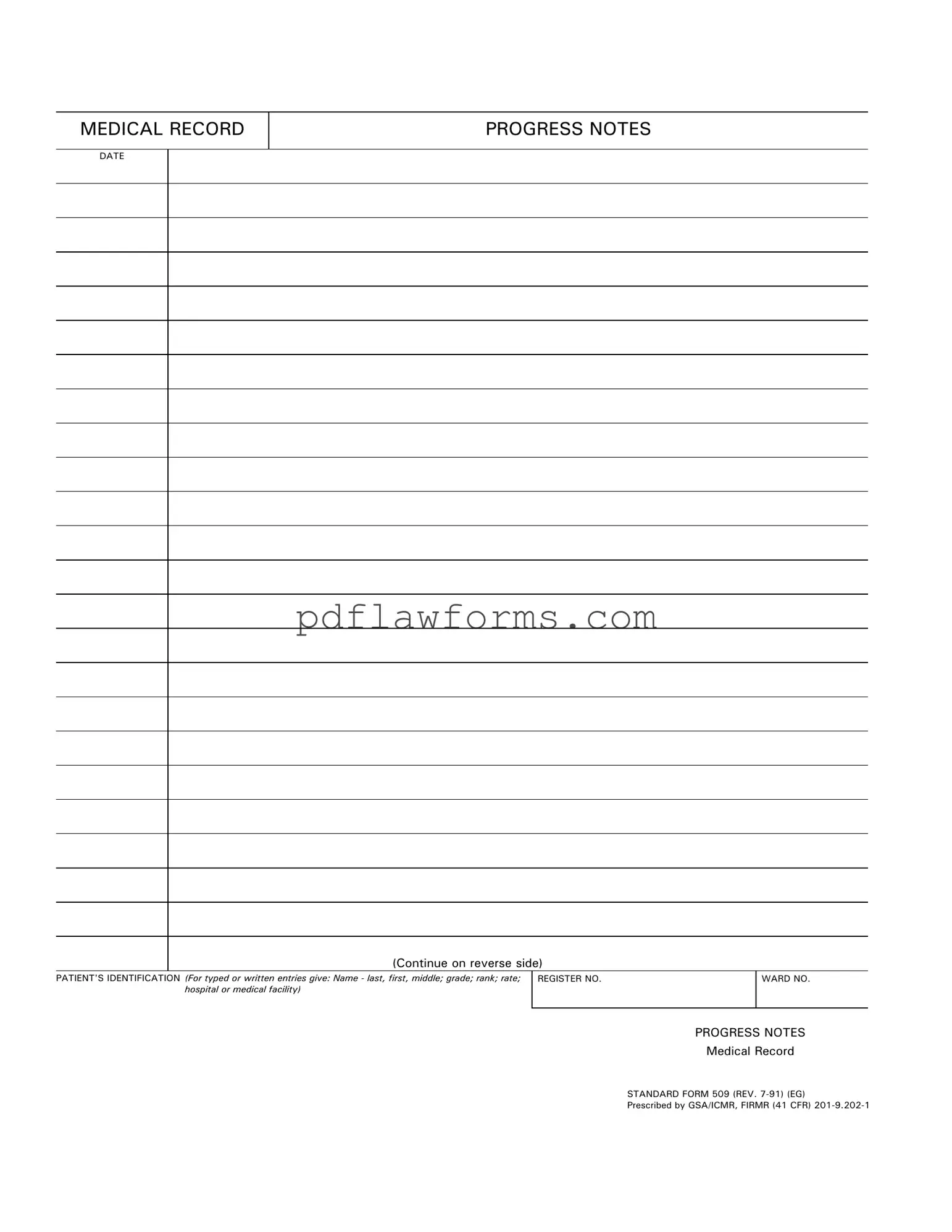Filling out the Progress Notes form accurately is essential for maintaining clear and effective medical records. However, several common mistakes can lead to confusion and miscommunication. One significant error is failing to include the patient's full identification details. Every entry should clearly state the patient's name, including last, first, and middle names, along with their grade, rank, rate, and the medical facility. Omitting any of this information can result in difficulties when referencing the patient's medical history.
Another frequent mistake is neglecting to record the date of the progress notes. Each entry must have a specific date to ensure that the timeline of care is clear. Without a date, it becomes challenging to track the patient's progress and can lead to gaps in their medical record.
Inaccurate or incomplete entries in the progress notes themselves can also pose problems. When documenting the patient's condition or treatment, it is crucial to provide detailed and precise information. Vague descriptions may lead to misunderstandings among healthcare providers and hinder the quality of care.
Moreover, some individuals forget to sign the Progress Notes form. A signature is not merely a formality; it serves as a verification of the information provided. Without a signature, the authenticity of the notes may be questioned, potentially impacting patient care.
Another common oversight is the failure to continue notes on the reverse side when necessary. If the space provided is insufficient, it is important to utilize the back of the form to ensure that all relevant information is captured. Leaving sections incomplete can lead to important details being overlooked.
Additionally, using abbreviations without clarification can create confusion. While medical professionals often understand common shorthand, it is vital to ensure that any abbreviations used are widely recognized or defined within the notes. This practice promotes clear communication among all members of the healthcare team.
Lastly, neglecting to update the patient's progress regularly can hinder effective treatment. Progress notes should reflect the most current information about the patient’s condition and response to treatment. Regular updates are essential for continuity of care and for making informed decisions regarding the patient's health.
